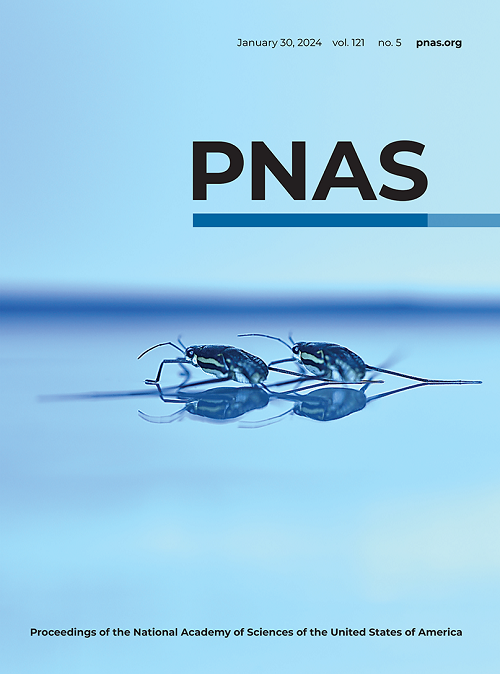Block copolymer molecular design to address practical limitations to recycling polyolefin blends.
IF 9.4
1区 综合性期刊
Q1 MULTIDISCIPLINARY SCIENCES
Proceedings of the National Academy of Sciences of the United States of America
Pub Date : 2025-07-18
DOI:10.1073/pnas.2508921122
引用次数: 0
Abstract
Plastics offer innumerable societal benefits but simultaneously contribute to persistent environmental pollution, dominated by polyethylene (PE) and isotactic polypropylene (iPP). Melt blending and reformulating postconsumer PE and iPP into useful materials presents a promising recycling approach. However, such repurposed plastics are generally mechanically inferior due to an inability to efficiently separate polyolefins in mixed waste streams; phase separation of PE and iPP results in brittleness as a consequence of poor interfacial strength. Recently, we demonstrated that a small amount (1 wt%) of a poly(ethylene)-block-poly(ethyl ethylene-ran-ethylene)-block-poly(ethylene) (EXE) triblock copolymer, synthesized by low-cost anionic polymerization of 1,3-butadiene followed by solution hydrogenation, restores tensile toughness to levels equivalent to virgin polyolefins. Unfortunately, low-temperature solvent insolubility of EXE, driven by crystallization of the E blocks containing 1.5 ethyl branches per 100 backbone repeat units (EB), presents a challenge for industrial hydrogenation. Comparable toughness (ca. > 400% strain at break) was achieved in the present work with 1.5 ≤ EB ≤ 6.5, accompanied by reduced EXE crystallinity and dissolution in cyclohexane down to room temperature at the highest EB content. This remarkable toughening behavior is attributed to a synergy between chain entanglements between the E end blocks and semicrystalline PE homopolymer and formation of E block "crystal nodules" that prevent chain pullout, along with topological constraints between the X loops and semicrystalline iPP. Our findings overcome barriers to commercial production of EXE with existing industrial facilities, providing a cost-effective strategy for recycling PE and iPP.嵌段共聚物分子设计,以解决回收聚烯烃共混物的实际限制。
塑料提供了无数的社会效益,但同时也造成了持续的环境污染,主要是聚乙烯(PE)和等规聚丙烯(iPP)。熔融混合和重新配制消费后PE和iPP成有用的材料提出了一个有前途的回收方法。然而,由于无法有效地分离混合废物流中的聚烯烃,这种重新利用的塑料通常机械性能较差;PE和iPP相分离,界面强度差,导致脆性。最近,我们证明了少量(1wt %)的聚(乙烯)-嵌段聚(乙基乙烯-苯乙烯)-嵌段聚(EXE)三嵌段共聚物,通过低成本的阴离子聚合,然后将1,3-丁二烯溶液加氢合成,将拉伸韧性恢复到与原始聚烯烃相当的水平。不幸的是,EXE的低温溶剂不溶性是由每100个主干重复单元(EB)含有1.5个乙基分支的E块的结晶所驱动的,这对工业加氢提出了挑战。在本研究中,在1.5≤EB≤6.5的条件下,获得了相当的韧性(约400%断裂应变),同时在最高EB含量的室温下,EXE结晶度降低,在环己烷中的溶解性降低。这种显著的增韧行为归因于E端嵌段和半晶PE均聚物之间的链缠结、E端嵌段“结晶结核”的形成以及X环和半晶iPP之间的拓扑约束之间的协同作用。我们的发现克服了现有工业设施商业化生产EXE的障碍,为PE和iPP的回收提供了一种具有成本效益的策略。
本文章由计算机程序翻译,如有差异,请以英文原文为准。
求助全文
约1分钟内获得全文
求助全文
来源期刊
CiteScore
19.00
自引率
0.90%
发文量
3575
审稿时长
2.5 months
期刊介绍:
The Proceedings of the National Academy of Sciences (PNAS), a peer-reviewed journal of the National Academy of Sciences (NAS), serves as an authoritative source for high-impact, original research across the biological, physical, and social sciences. With a global scope, the journal welcomes submissions from researchers worldwide, making it an inclusive platform for advancing scientific knowledge.

 求助内容:
求助内容: 应助结果提醒方式:
应助结果提醒方式:


